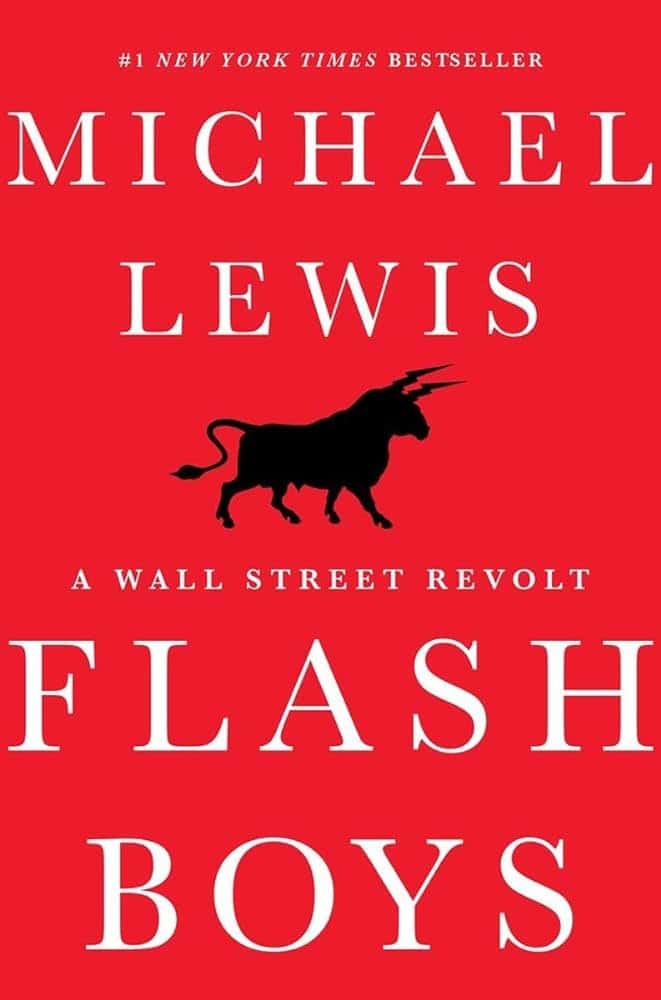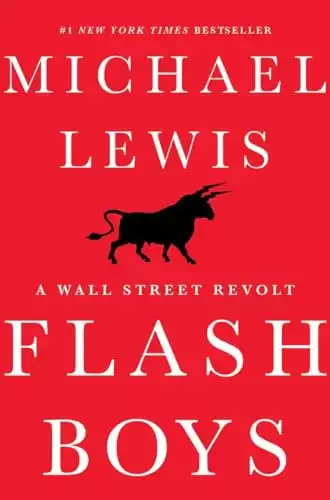Overview :Flash Boys
-
Book Title: Flash Boys A Wall Street Revolt by Michael Lewis
-
Author: Michael Lewis
-
Publication Date: March 2014
-
Rating: 4.5
-
price: $14.98
-
Pages: 275
Author Information
Deep Value: Why Activist Investors and Other Contrarians Battle for Control of Losing Corporations is authored by Tobias E. Carlisle, a well-regarded investment strategist and contrarian thinker. In this book, Carlisle explores how value investors identify struggling companies with hidden potential and work to turn them around for profit.
Introduction
In the ever-evolving landscape of financial markets, Michael Lewis's "Flash Boys: A Wall Street Revolt" emerges as a pivotal exposé of high-frequency trading (HFT). This gripping narrative not only illuminates the shadowy world of millisecond-based trading but also raises critical questions about market integrity and the ethics of financial innovation.
Book Summary
Lewis masterfully weaves a tale centered around Brad Katsuyama, a former Royal Bank of Canada trader who stumbles upon a perplexing anomaly in the stock market. As Katsuyama delves deeper, he uncovers a world where sophisticated algorithms and cutting-edge technology enable certain traders to gain microsecond advantages, effectively front-running others' trades. The book chronicles Katsuyama's journey from bewildered trader to market reformer, culminating in the creation of IEX, an alternative trading platform designed to level the playing field. Lewis's narrative skill shines as he transforms complex financial concepts into an accessible and engaging story, reminiscent of his work in "The Big Short" and "Liar's Poker."
Analysis of Themes
Technological Disruption in Finance
"Flash Boys" delves deep into how technology has revolutionized trading, drawing parallels with broader fintech trends. The book's exploration of HFT's impact on market dynamics offers valuable insights for investors navigating today's tech-driven financial landscape.
Ethics in Financial Markets
Lewis raises poignant questions about the moral implications of financial innovation. The narrative challenges readers to consider whether technological advancements in trading align with principles of fairness and transparency – a theme relevant to ongoing debates in personal finance and investing.
Regulatory Challenges
The book highlights the struggle of regulatory bodies to keep pace with rapid technological changes in financial markets. This theme resonates with current discussions on regulating cryptocurrencies and other emerging financial products.
Writing Style
Lewis's prose is crisp, engaging, and accessible. He expertly balances technical explanations with human interest, making "Flash Boys" as thrilling as a financial thriller while maintaining the depth of a well-researched exposé. His ability to simplify complex market mechanisms without losing nuance is particularly commendable.
Strengths and Weaknesses
Strengths:
- Compelling narrative that demystifies complex financial concepts
- In-depth exploration of ethical issues in modern finance
- Thought-provoking analysis of market structure and fairness
Weaknesses:
- Potential oversimplification of HFT's role in market dynamics
- Limited exploration of potential benefits of high-frequency trading
Comparison to Other Works
While "Flash Boys" shares thematic similarities with Lewis's earlier works like "The Big Short," it stands out for its focus on market structure rather than specific financial crises. Compared to more technical books on HFT, such as "Dark Pools" by Scott Patterson, Lewis's work offers a more narrative-driven and accessible approach to the subject.
Key Quotes
"The U.S. stock market now trades inside black boxes, in heavily guarded buildings in New Jersey and Chicago." This quote encapsulates the book's central theme of opacity in modern financial markets. "The deep problem with the system was a kind of moral inertia. So long as it served the narrow self-interests of everyone inside it, no one on the inside would ever seek to change it, no matter how corrupt or sinister it became." Lewis here highlights the ethical dilemmas at the heart of the financial system.
Author Information
Michael Lewis, a former bond salesman turned financial journalist, has a track record of illuminating complex financial topics for a broad audience. His works, including "Moneyball" and "The Big Short," have not only been bestsellers but have also been adapted into successful films.
"Flash Boys" is a compelling, eye-opening read that offers valuable insights into the hidden mechanics of modern financial markets.
Highlights from Flash Boys
High-Frequency Trading (HFT): Exposes how HFT firms exploit milliseconds to gain profit, often at investors' expense.
Unseen Market Manipulation: Reveals how Wall Street insiders rig the system, making trades unfair for average investors.
The Quest for Fairness: Follows a group led by Brad Katsuyama aiming to create an ethical, transparent stock exchange.
Speed Over Transparency: Highlights how Wall Street prioritizes trading speed over fairness, leading to hidden costs for everyday investors.
Regulatory Challenges: Shows the difficulty of regulating HFT practices due to rapid technological advancements.
Impact on Trust: Exposes how HFT erodes public trust in financial markets.
Conclusion
"Flash Boys: A Wall Street Revolt" is more than just an exposé of high-frequency trading; it's a wake-up call for investors and a challenge to the financial industry. Lewis's work prompts critical reflection on the nature of fairness in markets and the ethical responsibilities of those wielding technological advantages. For investors and finance professionals alike, this book offers invaluable insights into market dynamics that continue to shape trading strategies and regulatory discussions. Its relevance extends to current trends in personal finance, market analysis, and the ongoing evolution of financial technology. While the book has its critics, particularly regarding its portrayal of HFT, it remains a crucial read for anyone seeking to understand the complexities of modern financial markets. "Flash Boys" not only educates but also inspires readers to question and engage with the systems that govern our financial world.





